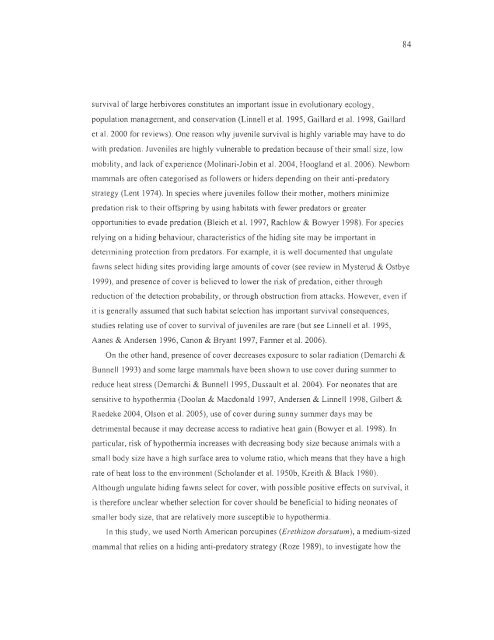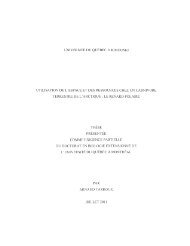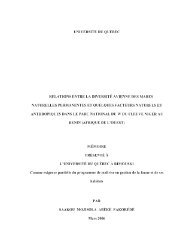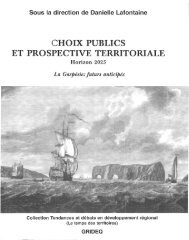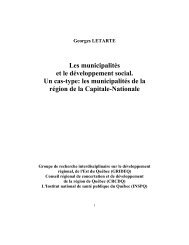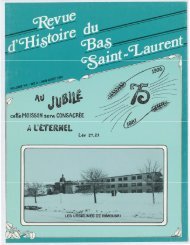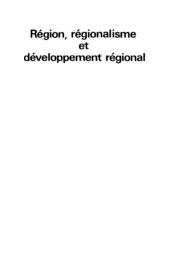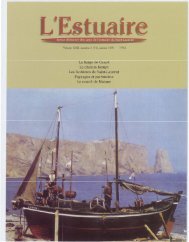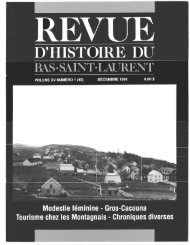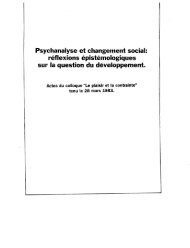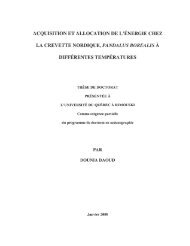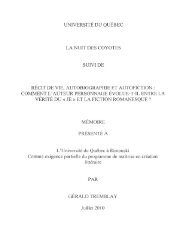influence du climat et de la prédation sur l'utilisation de l'habitat et la ...
influence du climat et de la prédation sur l'utilisation de l'habitat et la ...
influence du climat et de la prédation sur l'utilisation de l'habitat et la ...
Create successful ePaper yourself
Turn your PDF publications into a flip-book with our unique Google optimized e-Paper software.
84<br />
<strong>sur</strong>vival of <strong>la</strong>rge herbivores constitutes an important issue in evolutionary ecology,<br />
popu<strong>la</strong>tion management, and conservation (Linnell <strong>et</strong> al. 1995, Gail<strong>la</strong>rd <strong>et</strong> al. 1998, Gail<strong>la</strong>rd<br />
<strong>et</strong> al. 2000 for reviews). One reason why juvenile <strong>sur</strong>vival is highly variable may have to do<br />
with predation. Juveniles are highly vulnerable to predation because of their small size, low<br />
mobility, and <strong>la</strong>ck of experience (Molinari-Jobin <strong>et</strong> al. 2004, Hoog<strong>la</strong>nd <strong>et</strong> al. 2006). Newborn<br />
mammals are often categorised as followers or hi<strong>de</strong>rs <strong>de</strong>pending on their anti-predatory<br />
strategy (Lent 1974). In species where juveniles follow their mother, mothers minimize<br />
predation risk to their offspring by using habitats with fewer predators or greater<br />
opportunities to eva<strong>de</strong> predation (Bleich <strong>et</strong> al. 1997, Rachlow & Bowyer 1998). For species<br />
relying on a hiding behaviour, characteristics of the hiding site may be important in<br />
d<strong>et</strong>ermining protection from predators. For example, it is weil documented that ungu<strong>la</strong>te<br />
fawns select hiding sites providing <strong>la</strong>rge amounts of cover (see review in Mysterud & Ostbye<br />
1999), and presence of cover is believed to lower the risk of predation, either through<br />
re<strong>du</strong>ction of the d<strong>et</strong>ection probability, or through obstruction from attacks. However, even if<br />
it is generally assumed that such habitat selection has important sUl"vival consequences,<br />
studies re<strong>la</strong>ting use of cover to <strong>sur</strong>vival of juveniles are rare (but see Linnell <strong>et</strong> al. 1995 ,<br />
Aanes & An<strong>de</strong>rsen 1996, Canon & Bryant 1997, Fanner <strong>et</strong> al. 2006).<br />
On the other hand, presence of cover <strong>de</strong>creases expo<strong>sur</strong>e to so<strong>la</strong>r radiation (Demarchi &<br />
Bunnell 1993) and some <strong>la</strong>rge mammals have been shown to use cover <strong>du</strong>ring summer to<br />
re<strong>du</strong>ce heat stress (Demarchi & Bunnell 1995, Dussault <strong>et</strong> al. 2004). For neonates that are<br />
sensitive to hypothennia (Doo<strong>la</strong>n & Macdonald 1997, An<strong>de</strong>rsen & Linnell 1998, Gilbert &<br />
Rae<strong>de</strong>ke 2004, Oison <strong>et</strong> al. 2005), use of cover <strong>du</strong>ring sunny summer days may be<br />
d<strong>et</strong>rimental because it may <strong>de</strong>crease access to radiative heat gain (Bowyer <strong>et</strong> al. 1998). ln<br />
particu<strong>la</strong>r, risk ofhypothennia increases with <strong>de</strong>creasing body size because animais with a<br />
small body size have a high <strong>sur</strong>face area to volume ratio, which means that they have a high<br />
rate of heat loss to the environment (Scho<strong>la</strong>n<strong>de</strong>r <strong>et</strong> al. 1950b, Kreith & B<strong>la</strong>ck 1980).<br />
Although ungu<strong>la</strong>te hiding fawns select for cover, with possible positive effects on <strong>sur</strong>vival, it<br />
is therefore unclear wh<strong>et</strong>her selection for cover should be beneficial to hiding neonates of<br />
smaller body size, that are re<strong>la</strong>tively more susceptible to hypothennia.<br />
ln this study, we used North American porcupines (Er<strong>et</strong>hizon dorsatum), a medium-sized<br />
mammal that relies on a hiding anti-predatory strategy (Roze 1989), to investigate how the


